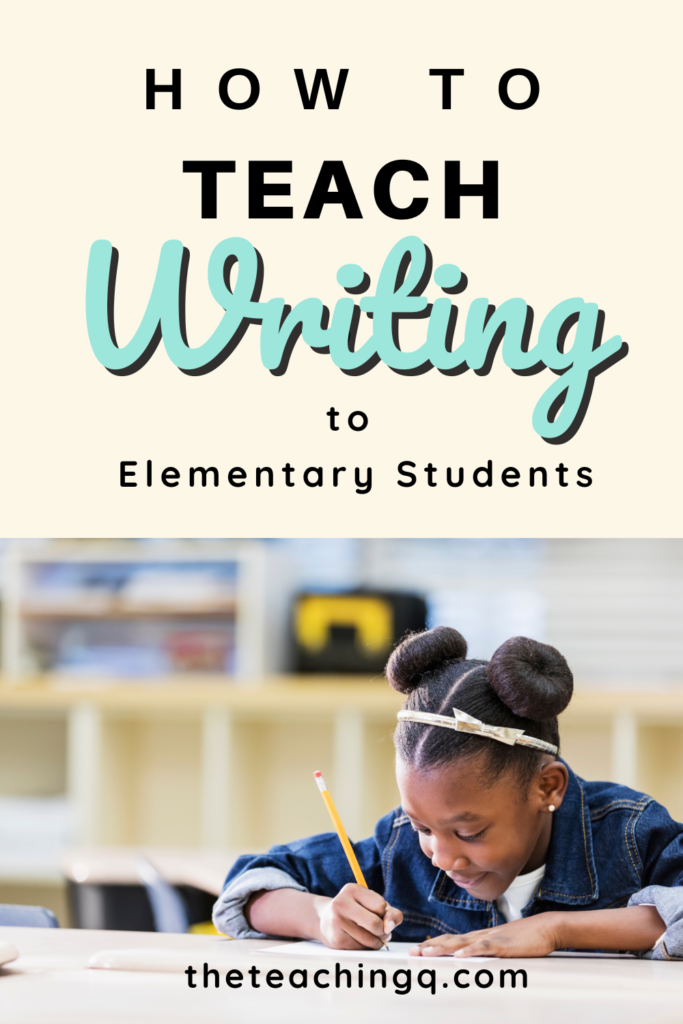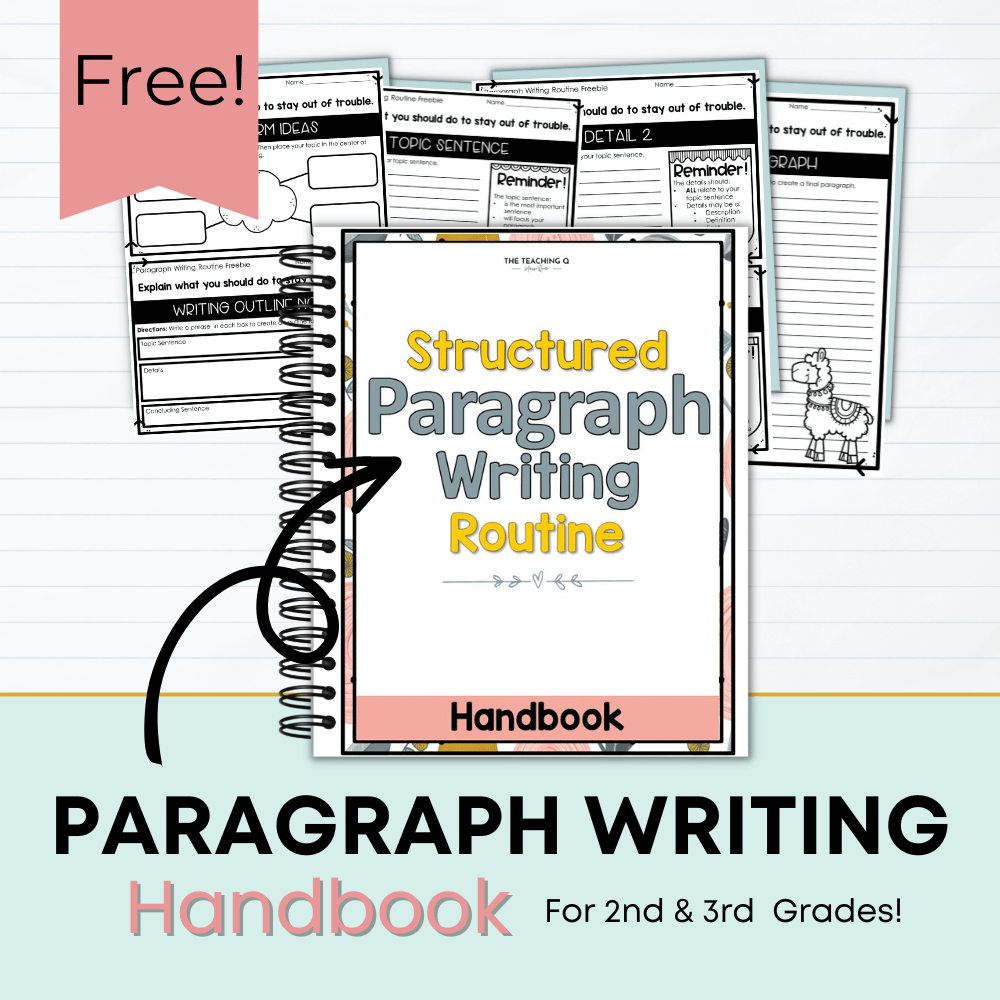Discovering how to teach writing to elementary students is an adventure that requires a bit of guidance and a lot of fun. Helping young writers express their thoughts with clarity and creativity is a journey well worth taking. Whether you’re a classroom teacher or a homeschooling parent, this post will give you practical strategies on how to teach writing to elementary students—step by step!
1. How to Teach Elementary Writing Skills
Teaching writing skills to elementary students starts with fostering a sense of excitement around writing. From choosing fun prompts to offering unique writing formats, there are several ways to keep them engaged. Here are my two top considerations on how to teach writing to elementary students:
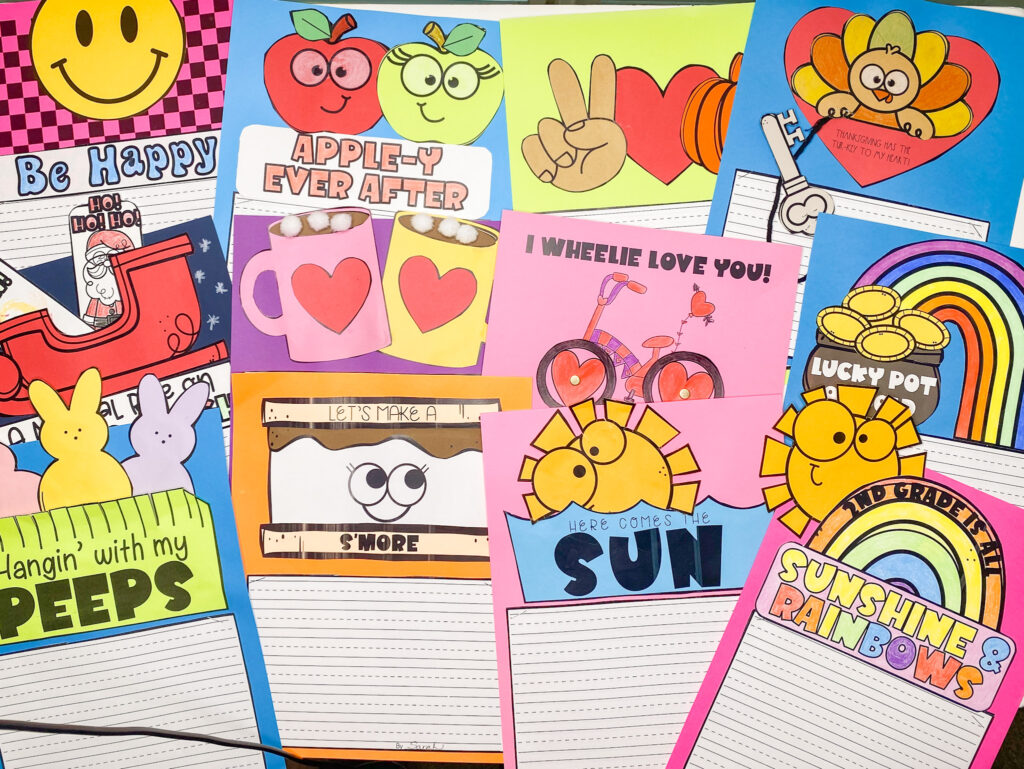
Motivating Writing Opportunities with Monthly Craftivities
Who doesn’t love a good craftivity?
Monthly writing craftivities, where students write and create related crafts, are a fantastic way to tie in creativity with writing practice. For example, November might be a gratitude writing activity paired with a “Thankful Turkey” craft.
These types of activities make writing feel unique, memorable, and hands-on. Craftivities can encourage even the most reluctant writers to give it a go, knowing their words will become part of a fun project.
I highly recommend you check out the Monthly Writing Craftivity Pack to get you started. Not only will your students cheer when they see the next craftivity, but you will also be delighted with the differentiation included to support all writers.
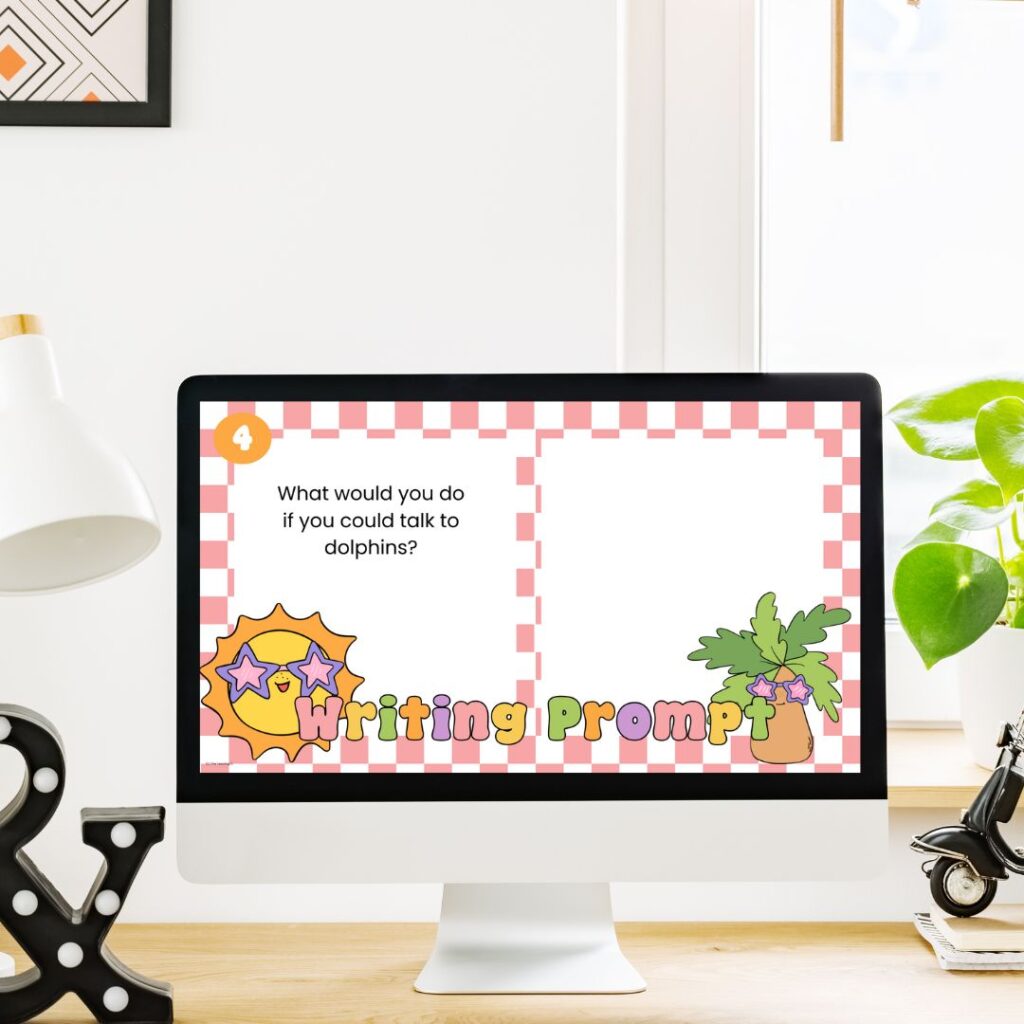
Daily Writing Practice with Monthly Writing Journal Prompts
Daily writing is essential for developing confidence and stamina, especially in elementary students. Start each day with a journal prompt that’s fun and encourages reflection or imagination.
Using something like Monthly Writing Journal Prompts can provide a steady flow of new ideas each day, ensuring students don’t get bored. With built-in accountability, like a color-by-code activity, they can see their progress over time, adding a visual element to their growth as writers.
2. What are the Five Steps of the Writing Process for Elementary Students?
Teaching young students the writing process is all about taking small steps. Here’s a simple breakdown of each stage:
- Prewriting: Encourage brainstorming and the use of graphic organizers. This is the thinking stage, where students gather ideas and organize their thoughts.
- Drafting: Let students write a rough draft. It’s important to emphasize that mistakes are okay and that this isn’t the final product.
- Revising: This stage involves adding details, rephrasing ideas, or improving sentence structure. It’s all about making the writing even better.
- Editing: Now is the time to correct grammar, spelling, and punctuation errors. Use checklists to help students focus on specific aspects.
- Publishing is the final step! Students rewrite their work neatly or type it out. If possible, have them share it with the class or at home—making it public adds a sense of pride in their accomplishment.
Teaching the writing process to elementary students in these clear, manageable steps improves their skills and boosts their confidence as writers.
3. How to Teach Writing to Elementary Students, Step by Step
Starting with early writers can be a rewarding process. Let’s look at a structured, step-by-step approach to help them build essential writing skills to answer the question of how to teach writing to elementary students. Here are the foundational skills to address.
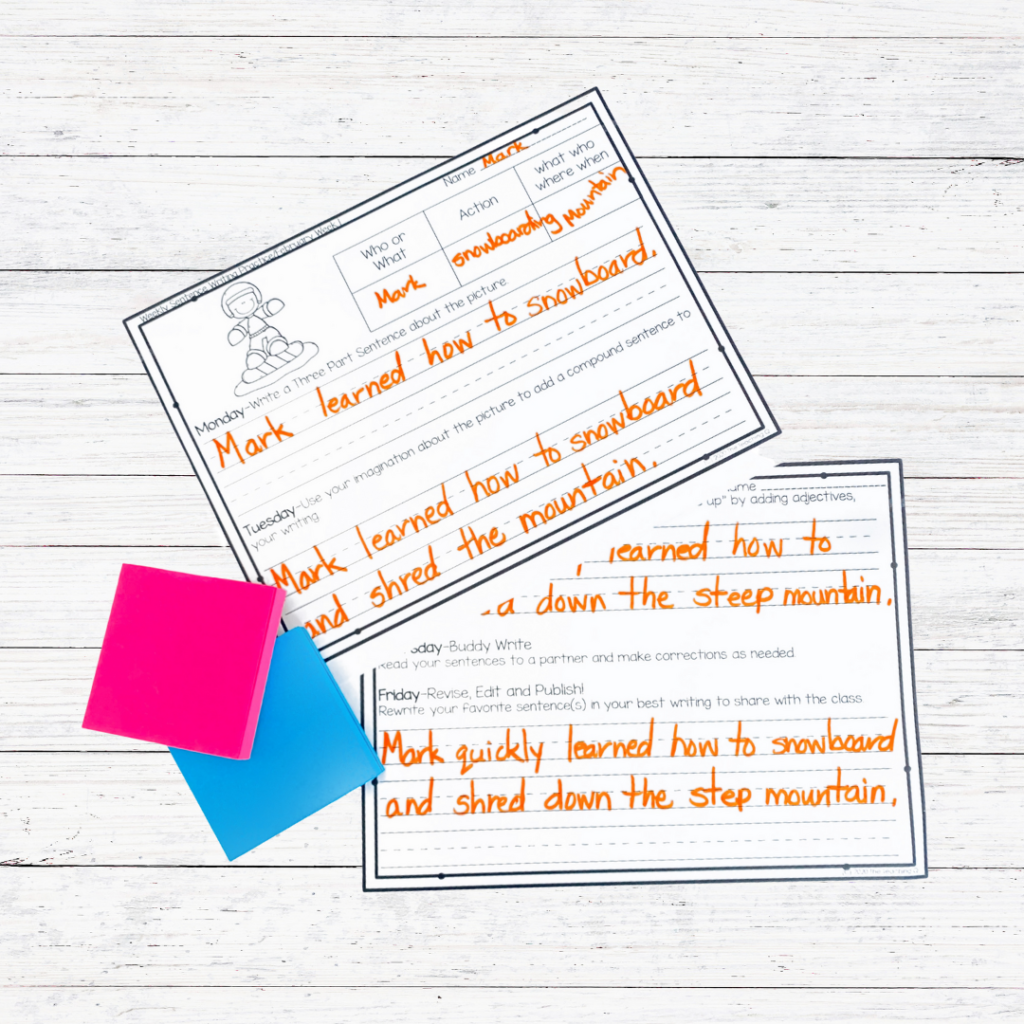
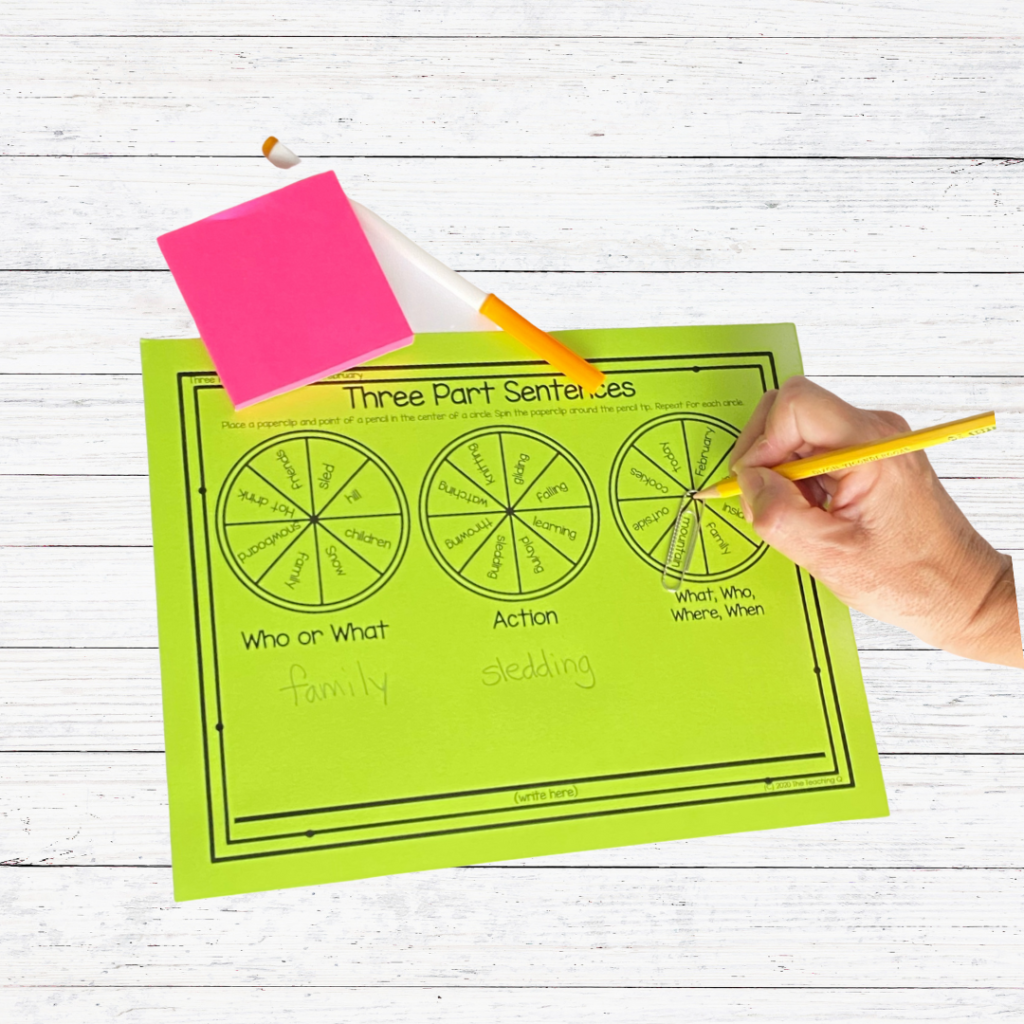
Monthly Sentence Writing Activities
For beginners, starting with simple sentence writing is perfect. Monthly sentence writing activities that focus on sentence structure, parts of speech, and vocabulary allow students to practice without feeling overwhelmed. Sentence writing can be a daily or weekly exercise, reinforcing grammar basics and helping them build confidence with the building blocks of writing. This is key to how to teach writing to elementary students.
I’d love for you to check out the engaging Secret Agent theme used to teach sentence writing structures with hands-on activities, as well as daily sentence writing practice found in my Monthly Sentence Writing Packs.
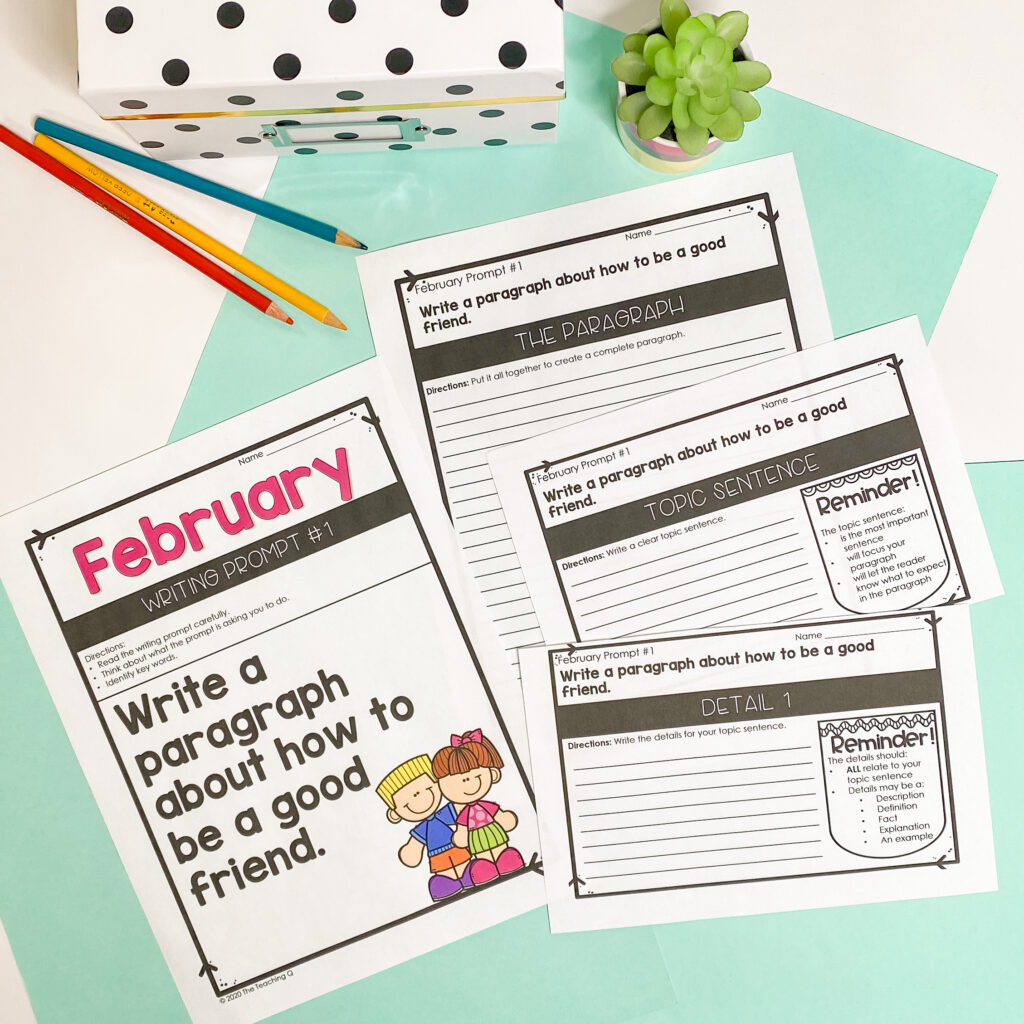
Monthly Paragraph Writing Routine
Once students are comfortable with sentences, you can introduce paragraph writing. A Monthly Paragraph Writing Routine encourages students to develop more complete ideas in structured ways. Starting each week with a specific prompt allows them to focus on one topic and create their paragraph writing skills steadily. By consistently practicing paragraph writing, students will become more comfortable moving from simple thoughts to more detailed, well-formed expressions.
The scaffolded instruction with on-page reminders ensures students develop well-organized and impressive paragraphs. Your students can get started by clicking here.

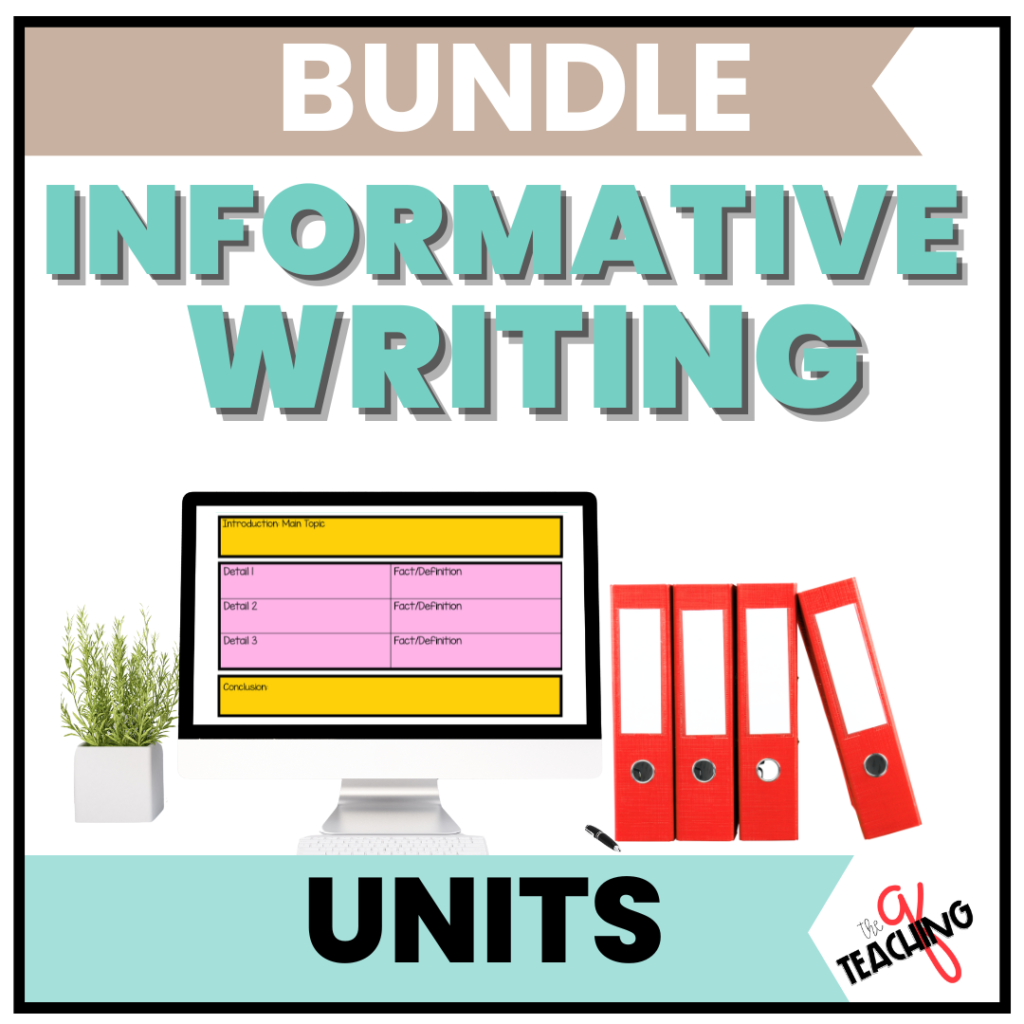
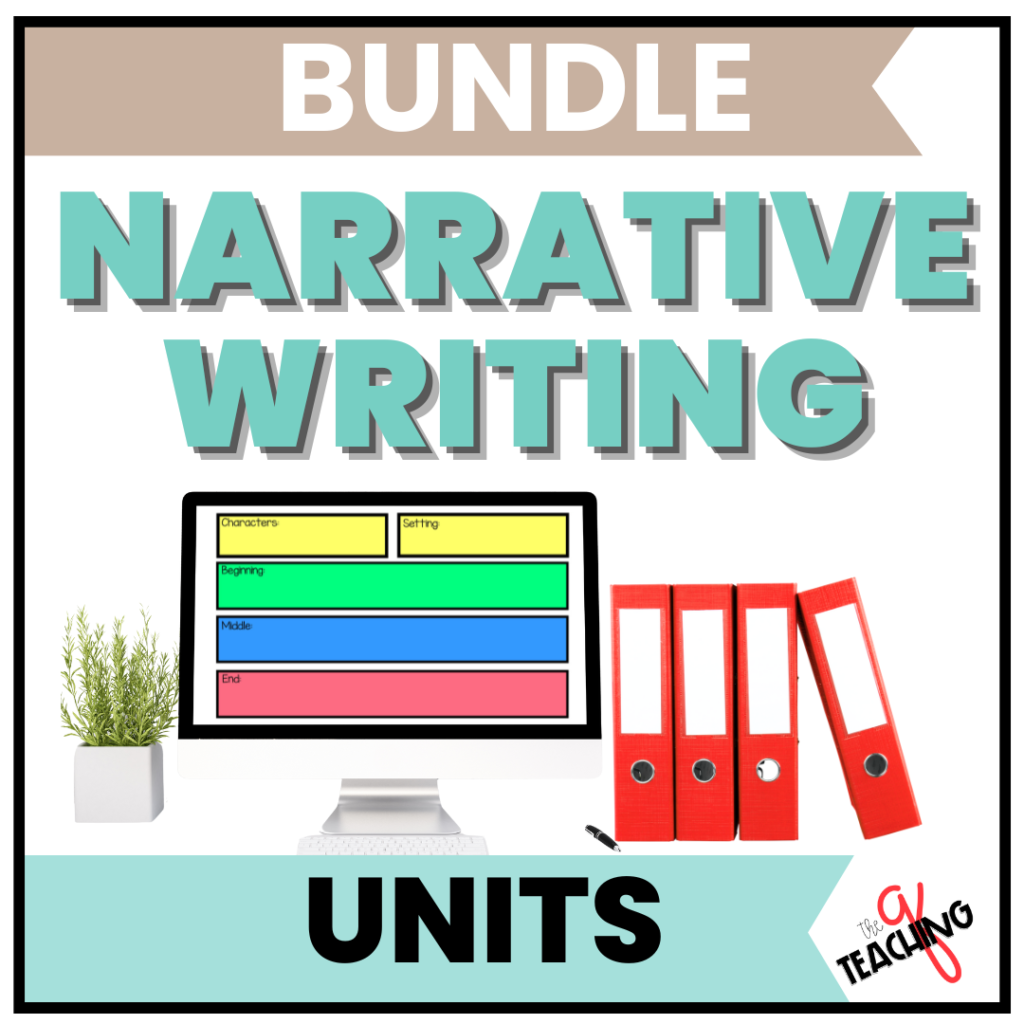
Informative, Opinion, and Narrative Writing Lessons
Next, expose students to the three main writing genres: informative, opinion, and narrative. Introducing them to each genre helps them understand the purpose of their writing:
- Informative Writing: Teach students to write informative pieces by researching or sharing knowledge on a topic. Whether it’s “All About Animals” or “How Plants Grow,” these lessons are an opportunity for students to practice organizing facts and presenting information clearly.
- Opinion Writing: Everyone has an opinion—even young kids! Teach students how to express theirs with supporting reasons. For instance, “What’s the Best Pet?” could be a prompt that encourages them to state an opinion and back it up with two to three reasons. Opinion writing lets them practice structured reasoning in a way that feels personal.
- Narrative Writing: Storytelling is naturally engaging for kids. Use narrative writing lessons to guide students in sharing their own stories, whether real or imagined. Prompt ideas could include “The Best Day Ever” or “My Imaginary Friend.” This genre lets them explore creative expression, adding details and working through the beginning, middle, and end of a story.
When using a genre writing unit, include teacher modeling, scaffolded instruction, and hands-on peer collaboration activities. If you prefer done-for-you units, I have them ready and set to go.
- OPINION WRITING UNITS
- INFORMATIVE WRITING UNITS
- NARRATIVE WRITING UNITS
4. What is the Best Method for Teaching Writing?
If you’re looking for the best method to answer how to teach writing to elementary students, scaffolded instruction combined with peer discussions stands out. Here’s why it works so well:
Scaffolded Instruction
Scaffolded instruction breaks down the writing process into manageable parts, gradually giving students more independence as they become more proficient. For example, younger or struggling writers provide sentence starters, templates, or specific structures they can fill in. As they gain confidence, they reduce the amount of support they receive. This gradual release of responsibility lets them feel successful at every stage.
Peer Discussions and Sharing
Writing can feel isolating, but it doesn’t have to be.
Encourage peer discussions where students can share ideas, ask questions, and get feedback. Set up small groups in a classroom to discuss their drafts or share their story ideas. For homeschooling, this might look like a weekly family “writer’s workshop.” Discussing ideas with others makes writing feel more dynamic and less intimidating.
A time to share student writing is a time to highlight all that the student has accomplished while celebrating their success. Read this blog post here for 12 Creative Ways for Students to Share Their Writing.
Wrapping Up: How to Teach Writing to Elementary Students
Teaching writing to elementary students is about creating a supportive, engaging environment where they feel safe to express themselves. From using monthly craftivities to break up the routine to follow a structured writing process, each step helps build their skills and confidence. With tools like sentence writing, paragraph writing routines, and genre-specific lessons, you can help your students become competent, enthusiastic writers one step at a time. And remember, writing isn’t just a skill; it’s a journey that can be incredibly rewarding for both teacher and student.
-Melissa | The Teaching Q
